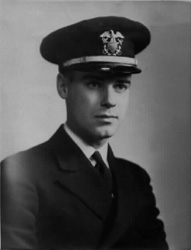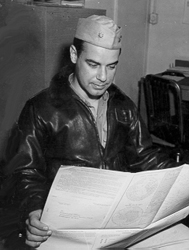Commander Randall T. Boyd Jr.


Randall T. Boyd Jr., a retired engineer and Naval Officer was decorated for bravery during World War II and the Korean War. Commander Boyd saw combat as a naval artillery officer during World War II and as a pilot during the Korean War. He was awarded a Silver Star for his exploits during World War II and the Distinguished Flying Cross for his activities during the Korean War.
Randall Boyd was born in Hingham, Masschusetts, and raised in Weymouth. Randall grew up across the street from the Reed Avenue water tower in South Weymouth. His parents, Randall and Rachel Boyd, were from Beachmont, Massachusetts (via Antigonish, Nova Scotia) and England respectively. Commander Boyd sought a career in the Navy due to the influence of his Uncle William Seach, a Weymouth native who was awarded the Medal of Honor for his valor during the Boxer Rebellion. Randall, an Eagle Scout and a Weymouth High School graduate, class of 1936, attained the third highest rank in the country in a competitive examination for an appointment to the US Naval Academy in Annapolis. His congressman, R.B. Wigglesworth, named him an appointee to Annapolis. Randall entered the academy in June of 1937 and graduated in 1941. A year after graduation from Annapolis, Ensign Boyd married Mary Jane Dooley of Roxbury. They were married on July 20, 1942 in Hull, Massachusetts. Randall also earned a master's degree in aeronautical engineering at Massachusetts Institute of Technology in 1947.
On November 10, 1942, he was artillery officer aboard the destroyer Dallas when it made a treacherous 10-mile run up the Sebou River to land an Army Ranger detachment to capture Port Lyautey Airport during the assault and occupation of French Morocco.
After World War II, he trained as a pilot in Pensacola, Florida, then served in the Korean War. Following the Korean War, he was commanding officer of Naval Patrol Squadron 34, and later was second in command at the Naval Base in Rota, Spain. After retiring from the Navy, he was an engineer at MIT's Draper Laboratory, where he worked on the Gemini and Apollo space programs, and a senior engineer at Brown and Root Inc. in Houston, where he oversaw shipbuilding projects.
Commander Boyd was buried with full military honors at Arlington National Cemetery on November 29, 2001.
Commander Boyd was a remarkable man. An accomplished, decorated soldier and brilliant engineer. He was a true hero from the "greatest generation," a humble patriot with a steadfast sense of duty.

